Automorphic Forms, Reprensentations, and L-Functions. Contains sections on Automorphic representations and L-functions as well as Arithmetical algebraic geometry and L-functions.ALGEBRA LINEAL STANLEY I. *GROSSMANSolitons, Nonlinear Evolution Equations and Inverse Scattering M. A. Ablowitz, P. A. ClarksonThis book brings together several aspects of soliton theory currently available only in research papers. Emphasis is given to the multi-dimensional problems which arise and includes inverse scattering in multi-dimensions, integrable nonlinear evolution equations in multi-dimensions and the dbar method.Solitons and the Inverse Scattering Transform Mark J. Ablowitz, Harvey SegurA study of the inverse scattering transform and its application to problems of nonlinear dispersive waves that arise in fluid dynamics, plasma physics, nonlinear optics, particle physics, crystal lattice theory, nonlinear circuit theory and other areas.Introduction to Analytic Number Theory Tom M. Apostol"This book is the first volume of a two-volume textbook for undergraduates and is indeed the crystallization of a course offered by the author at the California Institute of Technology to undergraduates without any previous knowledge of number theory. For this reason, the book starts with the most elementary properties of the natural integers. Nevertheless, the text succeeds in presenting an enormous amount of material in little more than 300 pages."-—MATHEMATICAL REVIEWSModular Functions and Dirichlet Series in Number Theory Tom M. ApostolA new edition of a classical treatment of elliptic and modular functions with some of their number-theoretic applications, this text offers an updated bibliography and an alternative treatment of the transformation formula for the Dedekind eta function. It covers many topics, such as Hecke’s theory of entire forms with multiplicative Fourier coefficients, and the last chapter recounts Bohr’s theory of equivalence of general Dirichlet series.Geometric Algebra E. ArtinThis classic text, written by one of the foremost mathematicians of the 20th century, is now available in a low-priced paperback edition. Exposition is centered on the foundations of affine geometry, the geometry of quadratic forms, and the structure of the general linear group. Context is broadened by the inclusion of projective and symplectic geometry and the structure of symplectic and orthogonal groups.Galois Theory: Lectures Delivered at the University of Notre Dame by Emil Artin Emil Artin, Arthur N. MilgramIn the nineteenth century, French mathematician Evariste Galois developed the Galois theory of groups-one of the most penetrating concepts in modem mathematics. The elements of the theory are clearly presented in this second, revised edition of a volume of lectures delivered by noted mathematician Emil Artin. The book has been edited by Dr. Arthur N. Milgram, who has also supplemented the work with a Section on Applications.
The first section deals with linear algebra, including fields, vector spaces, homogeneous linear equations, determinants, and other topics. A second section considers extension fields, polynomials, algebraic elements, splitting fields, group characters, normal extensions, roots of unity, Noether equations, Jummer's fields, and more.
Dr. Milgram's section on applications discusses solvable groups, permutation groups, solution of equations by radicals, and other concepts.A Short Course on Spectral Theory William ArvesonThis book presents the basic tools of modern analysis within the context of the fundamental problem of operator theory: to calculate spectra of specific operators on infinite dimensional spaces, especially operators on Hilbert spaces. The tools are diverse, and they provide the basis for more refined methods that allow one to approach problems that go well beyond the computation of spectra: the mathematical foundations of quantum physics, noncommutative K-theory, and the classification of simple C*-algebras being three areas of current research activity which require mastery of the material presented here.Introduction to p-Adic Numbers and Valuation Theory George BachmanIntroduction to p-Adic Numbers and Valuation Theory by George Bachman 1964 Academic Press 64-17793Quadratic Forms Over Semilocal Rings R. BaezaAbelian Functions: Abel's Theorem and the Allied Theory of Theta Functions H. F. BakerClassical algebraic geometry, inseparably connected with the names of Abel, Riemann, Weierstrass, Poincaré, Clebsch, Jacobi and other outstanding mathematicians of the last century, was mainly an analytical theory. In our century the methods and ideas of topology, commutative algebra and Grothendieck's schemes enriched it and seemed to have replaced once and forever the somewhat naive language of classical algebraic geometry. This classic book, written in 1897, covers the whole of algebraic geometry and associated theories. Baker discusses the subject in terms of transcendental functions, and theta functions in particular. Many of the ideas put forward are of continuing relevance today, and some of the most exciting ideas from theoretical physics draw on work presented here.Higher Regulators, Algebraic $K$-Theory, and Zeta Functions of Elliptic Curves Spencer J. BlochThis book is the long-awaited publication of the famous Irvine lectures. Delivered in 1978 at the University of California at Irvine, these lectures turned out to be an entry point to several intimately-connected new branches of arithmetic algebraic geometry, such as regulators and special values of L-functions of algebraic varieties, explicit formulas for them in terms of polylogarithms, the theory of algebraic cycles, and eventually the general theory of mixed motives which unifies and underlies all of the above (and much more). In the 20 years since, the importance of Bloch's lectures has not diminished. A lucky group of people working in the above areas had the good fortune to possess a copy of old typewritten notes of these lectures. Now everyone can have their own copy of this classic work.Geometric Methods in Algebra and Number Theory Fedor Bogomolov, Yuri Tschinkel* Contains a selection of articles exploring geometric approaches to problems in algebra, algebraic geometry and number theory
* The collection gives a representative sample of problems and most recent results in algebraic and arithmetic geometry
* Text can serve as an intense introduction for graduate students and those wishing to pursue research in algebraic and arithmetic geometryLie Groups and Lie Algebras: Chapters 4-6 N. BourbakiFrom the reviews of the French edition: "This is a rich and useful volume. The material it treats has relevance well beyond the theory of Lie groups and algebras, ranging from the geometry of regular polytopes and paving problems to current work on finite simple groups having a (B,N)-pair structure, or ‘Tits systems’". —G.B. Seligman in MathReviews.Lie Groups Daniel BumpThis book proceeds beyond the representation theory of compact Lie groups (which is the basis of many texts) and offers a carefully chosen range of material designed to give readers the bigger picture. It explores compact Lie groups through a number of proofs and culminates in a "topics" section that takes the Frobenius-Schur duality between the representation theory of the symmetric group and the unitary groups as unifying them.A Second Course in Mathematical Analysis J. C. Burkill, H. BurkillThe classic analysis textbook from Burkill and Burkill is now available in the Cambridge Mathematical Library. This straightforward course, based on the idea of a limit, is for students of mathematics and physics who have acquired a working knowledge of calculus and are ready for a more systematic approach. The treatment given here also brings in other limiting processes, such as the summation of infinite series and the expansion of trigonometric functions as power series. Particular attention is given to clarity of exposition and the logical development of the subject matter.Algebraic Number Theory: Proceedings of an Instructional Conference Organized by the London Mathematical Society J. W. S. Cassels, A. FrohlichThis book provides a brisk, thorough treatment of the foundations of algebraic number theory on which it builds to introduce more advanced topics. Throughout, the authors emphasize the systematic development of techniques for the explicit calculation of the basic invariants such as rings of integers, class groups, and units, combining at each stage theory with explicit computations.Rational Quadratic Forms J. W. S. Cassels, MathematicsThis exploration of quadratic forms over rational numbers and rational integers offers an excellent elementary introduction to many aspects of a classical subject, including recent developments. The author, a Professor Emeritus at Trinity College, University of Cambridge, offers a largely self-contained treatment that develops most of the prerequisites.Topics include the theory of quadratic forms over local fields, forms with integral coefficients, genera and spinor genera, reduction theory for definite forms, and Gauss' composition theory. The final chapter explains how to formulate the proofs in earlier chapters independently of Dirichlet's theorems related to the existence of primes in arithmetic progressions. Specialists will particularly value the several helpful appendixes on class numbers, Siegel's formulas, Tamagawa numbers, and other topics. Each chapter concludes with many exercises and hints, plus notes that include historical remarks and references to the literature.Class Field Theory Nancy ChildressClass field theory brings together the quadratic and higher reciprocity laws of Gauss, Legendre, and others, and vastly generalizes them. This book provides an accessible introduction to class field theory. It takes a traditional approach in that it attempts to present the material using the original techniques of proof, but in a fashion which is cleaner and more streamlined than most other books on this topic. It could be used for a graduate course on algebraic number theory, as well as for students who are interested in self-study. The book has been class-tested, and the author has included lots of challenging exercises throughout the text.L-Functions and Arithmetic J. Coates, M. J. TaylorThis volume is an outgrowth of the LMS Durham Symposium on L-functions, held in July 1989. The Symposium consisted of several short courses, aimed at presenting rigorous but nontechnical explanations of the latest research areas, and a number of individual lectures on specific topics.A Course in Computational Algebraic Number Theory Henri CohenA description of 148 algorithms fundamental to number-theoretic computations, in particular for computations related to algebraic number theory, elliptic curves, primality testing and factoring. The first seven chapters guide readers to the heart of current research in computational algebraic number theory, including recent algorithms for computing class groups and units, as well as elliptic curve computations, while the last three chapters survey factoring and primality testing methods, including a detailed description of the number field sieve algorithm. The whole is rounded off with a description of available computer packages and some useful tables, backed by numerous exercises. Written by an authority in the field, and one with great practical and teaching experience, this is certain to become the standard and indispensable reference on the subject.Sphere Packings, Lattices and Groups John Conway, Neil J. A. SloaneThe third edition of this definitive and popular book continues to pursue the question: what is the most efficient way to pack a large number of equal spheres in n-dimensional Euclidean space? The authors also examine such related issues as the kissing number problem, the covering problem, the quantizing problem, and the classification of lattices and quadratic forms. There is also a description of the applications of these questions to other areas of mathematics and science such as number theory, coding theory, group theory, analogue-to-digital conversion and data compression, n-dimensional crystallography, dual theory and superstring theory in physics. New and of special interest is a report on some recent developments in the field, and an updated and enlarged supplementary bibliography with over 800 items.A Course in Functional Analysis John B ConwayThis book is an introductory text in functional analysis. Unlike many modern treatments, it begins with the particular and works its way to the more general.
From the reviews: "This book is an excellent text for a first graduate course in functional analysis....Many interesting and important applications are included....It includes an abundance of exercises, and is written in the engaging and lucid style which we have come to expect from the author." —MATHEMATICAL REVIEWSIdeals, Varieties, and Algorithms: An Introduction to Computational Algebraic Geometry and Commutative Algebra David Cox, John Little, Donal O'SheaAlgebraic Geometry is the study of systems of polynomial equations in one or more variables, asking such questions as: Does the system have finitely many solutions, and if so how can one find them? And if there are infinitely many solutions, how can they be described and manipulated? The solutions of a system of polynomial equations form a geometric object called a variety; the corresponding algebraic object is an ideal. There is a close relationship between ideals and varieties which reveals the intimate link between algebra and geometry. Written at a level appropriate to undergraduates, this book covers such topics as the Hilbert Basis Theorem, the Nullstellensatz, invariant theory, projective geometry, and dimension theory. The algorithms to answer questions such as those posed above are an important part of algebraic geometry. This book bases its discussion of algorithms on a generalization of the division algorithm for polynomials in one variable that was only discovered in the 1960's. Although the algorithmic roots of algebraic geometry are old, the computational aspects were neglected earlier in this century. This has changed in recent years, and new algorithms, coupled with the power of fast computers, have let to some interesting applications, for example in robotics and in geometric theorem proving. In preparing a new edition of Ideals, Varieties and Algorithms the authors present an improved proof of the Buchberger Criterion as well as a proof of Bezout's Theorem. Appendix C contains a new section on Axiom and an update about Maple , Mathematica and REDUCE.Foundations of Computational Mathematics: Selected Papers of a Conference Held at Rio de Janeiro, January 1997 Felipe Cucker, Michael ShubThis book contains a collection of articles corresponding to some of the talks delivered at the Foundations of Computational Mathematics conference held at IMPA in Rio de Janeiro in January 1997. Some ofthe others are published in the December 1996 issue of the Journal of Complexity. Both of these publications were available and distributed at the meeting. Even in this aspect we hope to have achieved a synthesis of the mathematics and computer science cultures as well as of the disciplines. The reaction to the Park City meeting on Mathematics of Numerical Analy sis: Real Number Algorithms which was chaired by Steve Smale and had around 275 participants, was very enthusiastic. At the suggestion of Narendra Karmar mar a lunch time meeting of Felipe Cucker, Arieh Iserles, Narendra Karmarkar, Jim Renegar, Mike Shub and Steve Smale decided to try to hold a periodic meeting entitled "Foundations of Computational Mathematics" and to form an organization with the same name whose primary purpose will be to hold the meeting. This is then the first edition of FoCM as such. It has been organized around a small collection of workshops, namely - Systems of algebraic equations and computational algebraic geometry - Homotopy methods and real machines - Information-based complexity - Numerical linear algebra - Approximation and PDEs - Optimization - Differential equations and dynamical systems - Relations to computer science - Vision and related computational tools There were also twelve plenary speakers.Multiplicative Number Theory Harold Davenport, H.L. MontgomeryThe new edition of this thorough examination of the distribution of prime numbers in arithmetic progressions offers many revisions and corrections as well as a new section recounting recent works in the field. The book covers many classical results, including the Dirichlet theorem on the existence of prime numbers in arithmetical progressions and the theorem of Siegel. It also presents a simplified, improved version of the large sieve method.Introduction to Lattices and Order B. A. Davey, H. A. PriestleyOrdered structures have been increasingly recognized in recent years due to an explosion of interest in theoretical computer science and all areas of discrete mathematics. This book covers areas such as ordered sets and lattices. A key feature of ordered sets, one which is emphasized in the text, is that they can be represented pictorially. Lattices are also considered as algebraic structures and hence a purely algebraic study is used to reinforce the ideas of homomorphisms and of ideals encountered in group theory and ring theory. Exposure to elementary abstract algebra and the rotation of set theory are the only prerequisites for this text. For the new edition, much has been rewritten or expanded and new exercises have been added.Theory of Algebraic Integers Richard DedekindThe invention of ideals by Dedekind in the 1870s was well ahead of its time, and proved to be the genesis of what today we would call algebraic number theory. His memoir "Sur la Theorie des Nombres Entiers Algebriques" first appeared in installments in the Bulletin des sciences mathematiques in 1877. This book is a translation of that work by John Stillwell, who adds a detailed introduction giving historical background and who outlines the mathematical obstructions that Dedekind was striving to overcome. Dedekind's memoir offers a candid account of the development of an elegant theory and provides blow by blow comments regarding the many difficulties encountered en route. This book is a must for all number theorists.Foundations of Computational Mathematics Ronald Devore, Arieh Iserles, Endre SüliThe Society for the Foundations of Computational Mathematics supports fundamental research in a wide spectrum of computational mathematics and its application areas. As part of its endeavour to promote research in computational mathematics, the society regularly organizes conferences and workshops which bring together leading researchers in the diverse fields impinging on all aspects of computation. This book presents thirteen papers written by plenary speakers from the 1999 conference, all of whom are the foremost figures in their respective fields. Topics covered include complexity theory, approximation theory, optimization, computational geometry, stochastic systems and the computation of partial differential equations.Calogero-Moser-Sutherland Models Jan F. van Diejen, Luc VinetIn the 1970s F. Calogero and D. Sutherland discovered that for certain potentials in one-dimensional systems, but for any number of particles, the Schrödinger eigenvalue problem is exactly solvable. Until then, there was only one known nontrivial example of an exactly solvable quantum multi-particle problem. J. Moser subsequently showed that the classical counterparts to these models is also amenable to an exact analytical approach. The last decade has witnessed a true explosion of activities involving Calogero-Moser-Sutherland models, and these now play a role in research areas ranging from theoretical physics (such as soliton theory, quantum field theory, string theory, solvable models of statistical mechanics, condensed matter physics, and quantum chaos) to pure mathematics (such as representation theory, harmonic analysis, theory of special functions, combinatorics of symmetric functions, dynamical systems, random matrix theory, and complex geometry). The aim of this volume is to provide an overview of the many branches into which research on CMS systems has diversified in recent years. The contributions are by leading researchers from various disciplines in whose work CMS systems appear, either as the topic of investigation itself or as a tool for further applications.Algebraic Methods and Q-Special Functions Jan Felipe Van Diejen, Luc VinetThere has been revived interest in recent years in the study of special functions. Many of the latest advances in the field were inspired by the works of R. A. Askey and colleagues on basic hypergeometric series and I. G. Macdonald on orthogonal polynomials related to root systems. Significant progress was made by the use of algebraic techniques involving quantum groups, Hecke algebras, and combinatorial methods. The CRM organized a workshop for key researchers in the field to present an overview of current trends. This volume consists of the contributions to that workshop. The topics include basic hypergeometric functions, algebraic and representation-theoretic methods, combinatorics of symmetric functions, root systems, and the connections with integrable systems.La Geometrie des groupes classiques Jean DieudonneLectures on Number Theory Peter Gustav Lejeune Dirichlet, Richard Dedekind, P. G. L. DirichletThis volume is a translation of Dirichlet's Vorlesungen über Zahlentheorie which includes nine supplements by Dedekind and an introduction by John Stillwell, who translated the volume.
Lectures on Number Theory is the first of its kind on the subject matter. It covers most of the topics that are standard in a modern first course on number theory, but also includes Dirichlet's famous results on class numbers and primes in arithmetic progressions.
The book is suitable as a textbook, yet it also offers a fascinating historical perspective that links Gauss with modern number theory. The legendary story is told how Dirichlet kept a copy of Gauss's Disquisitiones Arithmeticae with him at all times and how Dirichlet strove to clarify and simplify Gauss's results. Dedekind's footnotes document what material Dirichlet took from Gauss, allowing insight into how Dirichlet transformed the ideas into essentially modern form.
Also shown is how Gauss built on a long tradition in number theory—going back to Diophantus—and how it set the agenda for Dirichlet's work. This important book combines historical perspective with transcendent mathematical insight. The material is still fresh and presented in a very readable fashion.
This volume is one of an informal sequence of works within the History of Mathematics series. Volumes in this subset, "Sources", are classical mathematical works that served as cornerstones for modern mathematical thought. (For another historical translation by Professor Stillwell, see Sources of Hyperbolic Geometry, Volume 10 in the History of Mathematics series.)Calculus With Analytic Geometry John B. Fraleighcalculus with analytic geometry textbook.Student's Solutions Manual to Accompany Calculus with Analytic Geometry - Second Edition John B. FraleighStudent's Solutions Manual to Accompany Calculus with Analytic Geometry - Second EditionFree Lattices Ralph FreeseThis book explores the surprisingly rich and complex structure of free lattices. The first part of the book presents a complete exposition of the basic theory of free lattices, projective lattices, and lattices which are bounded homomorphic images of a free lattice, as well as applications of these results to other areas. This portion of the book is suitable for use in a graduate course in lattice theory or general algebra. The second part of the book contains new results about free lattices and new proofs of known results, providing the reader with a coherent picture of the fine structure of free lattices. The book closes with an analysis of algorithms for free lattices and finite lattices that is accessible to researchers in other areas and depends only on the first chapter and a small part of the second. Several open problems appear throughout the book and, for easy reference, are assembled in a section at the end. Synthesizing seventy years of research, this is the only comprehensive treatment available of the theory of free lattices.Algebraic Number Theory A. Fröhlich, M. J. TaylorThis book provides a brisk, thorough treatment of the foundations of algebraic number theory on which it builds to introduce more advanced topics. Throughout, the authors emphasize the systematic development of techniques for the explicit calculation of the basic invariants such as rings of integers, class groups, and units, combining at each stage theory with explicit computations.Central Extensions, Galois, Groups and Ideal Class Groups of Number Fields Albrecht FrohlichThese notes deal with a set of interrelated problems and results in algebraic number theory, in which there has been renewed activity in recent years. The underlying tool is the theory of the central extensions and, in most general terms, the underlying aim is to use class field theoretic methods to reach beyond Abelian extensions. One purpose of this book is to give an introductory survey, assuming the basic theorems of class field theory as mostly recalled in section 1 and giving a central role to the Tate cohomology groups. The principal aim is, however, to use the general theory as developed here, together with the special features of class field theory over, to derive some rather strong theorems of a very concrete nature, as base field. The specialization of the theory of central extensions to the base field is shown to derive from an underlying principle of wide applicability.The author describes certain non-Abelian Galois groups over the rational field and their inertia subgroups, and uses this description to gain information on ideal class groups of absolutely Abelian fields, all in entirely rational terms. Precise and explicit arithmetic results are obtained, reaching far beyond anything available in the general theory. The theory of the genus field, which is needed as background as well as being of independent interest, is presented in section 2. In section 3, the theory of central extension is developed. The special features are pointed out throughout. Section 4 deals with Galois groups, and applications to class groups are considered in section 5. Finally, section 6 contains some remarks on the history and literature, but no completeness is attempted.Lectures on algebraic topology Marvin J GreenbergBook by Greenberg, Marvin JAbstract Algebra Pierre Antoine GrilletA completely reworked new edition of this superb textbook. This key work is geared to the needs of the graduate student. It covers, with proofs, the usual major branches of groups, rings, fields, and modules. Its inclusive approach means that all of the necessary areas are explored, while the level of detail is ideal for the intended readership. The text tries to promote the conceptual understanding of algebra as a whole, doing so with a masterful grasp of methodology. Despite the abstract subject matter, the author includes a careful selection of important examples, together with a detailed elaboration of the more sophisticated, abstract theories.Lectures on the Theory of Elliptic Functions Harris HancockPrized for its extensive coverage of classical material, this text is also well regarded for its unusual fullness of treatment and its comprehensive discussion of both theory and applications. The author developes the theory of elliptic integrals, beginning with formulas establishing the existence, formation, and treatment of all three types, and concluding with the most general description of these integrals in terms of the Riemann surface. The theories of Legendre, Abel, Jacobi, and Weierstrass are developed individually and correlated with the universal laws of Riemann. The important contributory theorems of Hermite and Liouville are also fully developed. 1910 ed.Guide to Elliptic Curve Cryptography Darrel Hankerson, Alfred J. Menezes, Scott VanstoneAfter two decades of research and development, elliptic curve cryptography now has widespread exposure and acceptance. Industry, banking, and government standards are in place to facilitate extensive deployment of this efficient public-key mechanism.
Anchored by a comprehensive treatment of the practical aspects of elliptic curve cryptography (ECC), this guide explains the basic mathematics, describes state-of-the-art implementation methods, and presents standardized protocols for public-key encryption, digital signatures, and key establishment. In addition, the book addresses some issues that arise in software and hardware implementation, as well as side-channel attacks and countermeasures. Readers receive the theoretical fundamentals as an underpinning for a wealth of practical and accessible knowledge about efficient application.
Features & Benefits:
* Breadth of coverage and unified, integrated approach to elliptic curve cryptosystems
* Describes important industry and government protocols, such as the FIPS 186-2 standard from the U.S. National Institute for Standards and Technology
* Provides full exposition on techniques for efficiently implementing finite-field and elliptic curve arithmetic
* Distills complex mathematics and algorithms for easy understanding
* Includes useful literature references, a list of algorithms, and appendices on sample parameters, ECC standards, and software tools
This comprehensive, highly focused reference is a useful and indispensable resource for practitioners, professionals, or researchers in computer science, computer engineering, network design, and network data security.An Introduction to the Theory of Numbers G. H. Hardy, E. M. WrightThis is the fifth edition of a work (first published in 1938) which has become the standard introduction to the subject. The book has grown out of lectures delivered by the authors at Oxford, Cambridge, Aberdeen, and other universities. It is neither a systematic treatise on the theory of numbers nor a 'popular' book for non-mathematical readers. It contains short accounts of the elements of many different sides of the theory, not usually combined in a single volume; and, although it is written for mathematicians, the range of mathematical knowledge presupposed is not greater than that of an intelligent first-year student. In this edition, the main changes are in the notes at the end of each chapter. Sir Edward Wright seeks to provide up-to-date references for the reader who wishes to pursue a particular topic further and to present, both in the notes and in the text, a reasonably accurate account of the present state of knowledge.Noncommutative Rings I. N. Herstein"Nommutative Rings" provides a cross-section of ideas, techniques and results that give the reader an idea of that part of algebra which concerns itself with noncommutative rings. In the space of 200 pages, Herstein covers the Jacobson radical, semisimple rings, commutativity theorems, simple algebras, representations of finite groups, polynomial identities, Goldie's theorem and the Golod-Shafarevitch theorem. Almost every practicing ring theorist has studied portions of this classic monograph.Topics in Algebra, 2nd Edition I. N. HersteinNew edition includes extensive revisions of the material on finite groups and Galois Theory. New problems added throughout.Elementary Theory of L-functions and Eisenstein Series Haruzo HidaThis book is a comprehensive and systematic account of the theory of p-adic and classical modular forms and the theory of the special values of arithmetic L-functions and p-adic L-functions. The approach is basically algebraic, and the treatment is elementary. No deep knowledge from algebraic geometry and representation theory is required. The author's main tool in dealing with these problems is taken from cohomology theory over Riemann surfaces, which is also explained in detail in the book. He also gives a concise but thorough treatment of analytic continuation and functional equation. Graduate students wishing to know more about L-functions will find this a unique introduction to this fascinating branch of mathematics.Groups, Representations and Characters V.E. HillReflection Groups and Coxeter Groups James E. HumphreysIn this graduate textbook Professor Humphreys presents a concrete and up-to-date introduction to the theory of Coxeter groups. He assumes that the reader has a good knowledge of algebra, but otherwise the book is self contained. The first part is devoted to establishing concrete examples; the author begins by developing the most important facts about finite reflection groups and related geometry, and showing that such groups have a Coxeter representation. In the next chapter these groups are classified by Coxeter diagrams, and actual realizations of these groups are discussed. Chapter 3 discusses the polynomial invariants of finite reflection groups, and the first part ends with a description of the affine Weyl groups and the way they arise in Lie theory. The second part (which is logically independent of, but motivated by, the first) starts by developing the properties of the Coxeter groups. Chapter 6 shows how earlier examples and others fit into the general classification of Coxeter diagrams. Chapter 7 is based on the very important work of Kazhdan and Lusztig and the last chapter presents a number of miscellaneous topics of a combinatorial nature.Algebra Thomas W. HungerfordFinally a self-contained, one volume, graduate-level algebra text that is readable by the average graduate student and flexible enough to accommodate a wide variety of instructors and course contents. The guiding principle throughout is that the material should be presented as general as possible, consistent with good pedagogy. Therefore it stresses clarity rather than brevity and contains an extraordinarily large number of illustrative exercises.Analytic Number Theory (Colloquium Publications, Vol. 53) (Colloquium Publications (Amer Mathematical Soc)) Henryk Iwaniec, Emmanuel KowalskiAnalytic Number Theory distinguishes itself by the variety of tools it uses to establish results. One of the primary attractions of this theory is its vast diversity of concepts and methods. The main goals of this book are to show the scope of the theory, both in classical and modern directions, and to exhibit its wealth and prospects, beautiful theorems, and powerful techniques.
The book is written with graduate students in mind, and the authors nicely balance clarity, completeness, and generality. The exercises in each section serve dual purposes, some intended to improve readers' understanding of the subject and others providing additional information. Formal prerequisites for the major part of the book do not go beyond calculus, complex analysis, integration, and Fourier series and integrals. In later chapters automorphic forms become important, with much of the necessary information about them included in two survey chapters.Lectures in Abstract Algebra I: Basic Concepts N. JacobsonThe present volume is the first of three that will be published under the general title Lectures in Abstract Algebra. These vol umes are based on lectures which the author has given during the past ten years at the University of North Carolina, at The Johns Hopkins University, and at Yale "University. The general plan of the work IS as follows: The present first volume gives an introduction to abstract algebra and gives an account of most of the important algebraIc concepts. In a treatment of this type it is impossible to give a comprehensive account of the topics which are introduced. Nevertheless we have tried to go beyond the foundations and elementary properties of the algebraic sys tems. This has necessitated a certain amount of selection and omission. We feel that even at the present stage a deeper under standing of a few topics is to be preferred to a superficial under standing of many. The second and third volumes of this work will be more special ized in nature and will attempt to give comprehensive accounts of the topics which they treat. Volume II will bear the title Linear Algebra and will deal with the theorv of vectQ!_JlP. -a. ces. . . . . Volume III, The Theory of Fields and Galois Theory, will be con cerned with the algebraic structure offieras and with valuations of fields. All three volumes have been planned as texts for courses.Lectures in Abstract Algebra: II. Linear Algebra N. JacobsonThe present volume is the second in the author's series of three dealing with abstract algebra. For an understanding of this volume a certain familiarity with the basic concepts treated in Volume I: groups, rings, fields, homomorphisms, is presup posed. However, we have tried to make this account of linear algebra independent of a detailed knowledge of our first volume. References to specific results are given occasionally but some of the fundamental concepts needed have been treated again. In short, it is hoped that this volume can be read with complete understanding by any student who is mathematically sufficiently mature and who has a familiarity with the standard notions of modern algebra. Our point of view in the present volume is basically the abstract conceptual one. However, from time to time we have deviated somewhat from this. Occasionally formal calculational methods yield sharper results. Moreover, the results of linear algebra are not an end in themselves but are essential tools for use in other branches of mathematics and its applications. It is therefore useful to have at hand methods which are constructive and which can be applied in numerical problems. These methods sometimes necessitate a somewhat lengthier discussion but we have felt that their presentation is justified on the grounds indicated. A stu dent well versed in abstract algebra will undoubtedly observe short cuts. Some of these have been indicated in footnotes. We have included a large number of exercises in the text.Lectures in Abstract Algebra: III. Theory of Fields and Galois Theory N. JacobsonThe present volume completes the series of texts on algebra which the author began more than ten years ago. The account of field theory and Galois theory which we give here is based on the notions and results of general algebra which appear in our first volume and on the more elementary parts of the second volume, dealing with linear algebra. The level of the present work is roughly the same as that of Volume II. In preparing this book we have had a number of objectives in mind. First and foremost has been that of presenting the basic field theory which is essential for an understanding of modern algebraic number theory, ring theory, and algebraic geometry. The parts of the book concerned with this aspect of the subject are Chapters I, IV, and V dealing respectively with finite dimen sional field extensions and Galois theory, general structure theory of fields, and valuation theory. Also the results of Chapter IlIon abelian extensions, although of a somewhat specialized nature, are of interest in number theory. A second objective of our ac count has been to indicate the links between the present theory of fields and the classical problems which led to its development.General Topology John L. KelleyAdvanced Algebra Anthony W. KnappBasic Algebra and Advanced Algebra systematically develop concepts and tools in algebra that are vital to every mathematician, whether pure or applied, aspiring or established. Advanced Algebra includes chapters on modern algebra which treat various topics in commutative and noncommutative algebra and provide introductions to the theory of associative algebras, homological algebras, algebraic number theory, and algebraic geometry. Many examples and hundreds of problems are included, along with hints or complete solutions for most of the problems. Together the two books give the reader a global view of algebra and its role in mathematics as a whole.Elliptic Curves. Anthony W. KnappAn elliptic curve is a particular kind of cubic equation in two variables whose projective solutions form a group. Modular forms are analytic functions in the upper half plane with certain transformation laws and growth properties. The two subjects—elliptic curves and modular forms—come together in Eichler-Shimura theory, which constructs elliptic curves out of modular forms of a special kind. The converse, that all rational elliptic curves arise this way, is called the Taniyama-Weil Conjecture and is known to imply Fermat's Last Theorem.
Elliptic curves and the modeular forms in the Eichler- Shimura theory both have associated L functions, and it is a consequence of the theory that the two kinds of L functions match. The theory covered by Anthony Knapp in this book is, therefore, a window into a broad expanse of mathematics—including class field theory, arithmetic algebraic geometry, and group representations—in which the concidence of L functions relates analysis and algebra in the most fundamental ways.
Developing, with many examples, the elementary theory of elliptic curves, the book goes on to the subject of modular forms and the first connections with elliptic curves. The last two chapters concern Eichler-Shimura theory, which establishes a much deeper relationship between the two subjects. No other book in print treats the basic theory of elliptic curves with only undergraduate mathematics, and no other explains Eichler-Shimura theory in such an accessible manner.The Book of Involutions Alexander Merkurjev, Markus Rost, and Jean-Pierre Tignol Max-Albert Knus, Max-Albert KnusThis monograph is an exposition of the theory of central simple algebras with involution, in relation to linear algebraic groups. It provides the algebra-theoretic foundations for much of the recent work on linear algebraic groups over arbitrary fields. Involutions are viewed as twisted forms of (hermitian) quadrics, leading to new developments on the model of the algebraic theory of quadratic forms. In addition to classical groups, phenomena related to triality are also discussed, as well as groups of type $F_4$ or $G_2$ arising from exceptional Jordan or composition algebras. Several results and notions appear here for the first time, notably the discriminant algebra of an algebra with unitary involution and the algebra-theoretic counterpart to linear groups of type $D_4$. This volume also contains a Bibliography and Index. Features: original material not in print elsewhere a comprehensive discussion of algebra-theoretic and group-theoretic aspects extensive notes that give historical perspective and a survey on the literature rational methods that allow possible generalization to more general base ringsA Course in Number Theory and Cryptography NEAL KoblitzThis is a substantially revised and updated introduction to arithmetic topics, both ancient and modern, that have been at the centre of interest in applications of number theory, particularly in cryptography. As such, no background in algebra or number theory is assumed, and the book begins with a discussion of the basic number theory that is needed. The approach taken is algorithmic, emphasising estimates of the efficiency of the techniques that arise from the theory, and one special feature is the inclusion of recent applications of the theory of elliptic curves. Extensive exercises and careful answers are an integral part all of the chapters.p-adic Numbers, p-adic Analysis, and Zeta-Functions NEAL KoblitzThe first edition of this work has become the standard introduction to the theory of p-adic numbers at both the advanced undergraduate and beginning graduate level. This second edition includes a deeper treatment of p-adic functions in Ch. 4 to include the Iwasawa logarithm and the p-adic gamma-function, the rearrangement and addition of some exercises, the inclusion of an extensive appendix of answers and hints to the exercises, as well as numerous clarifications.Number Theory: Algebraic Numbers and Functions Helmut KochAlgebraic number theory is one of the most refined creations in mathematics. It has been developed by some of the leading mathematicians of this and previous centuries. The primary goal of this book is to present the essential elements of algebraic number theory, including the theory of normal extensions up through a glimpse of class field theory. Following the example set for us by Kronecker, Weber, Hilbert and Artin, algebraic functions are handled here on an equal footing with algebraic numbers. This is done on the one hand to demonstrate the analogy between number fields and function fields, which is especially clear in the case where the ground field is a finite field. On the other hand, in this way one obtains an introduction to the theory of "higher congruences" as an important element of "arithmetic geometry". Early chapters discuss topics in elementary number theory, such as Minkowski's geometry of numbers, public-key cryptography and a short proof of the Prime Number Theorem, following Newman and Zagier. Next, some of the tools of algebraic number theory are introduced, such as ideals, discriminants and valuations. These results are then applied to obtain results about function fields, including a proof of the Riemann-Roch Theorem and, as an application of cyclotomic fields, a proof of the first case of Fermat's Last Theorem. There are a detailed exposition of the theory of Hecke $L$-series, following Tate, and explicit applications to number theory, such as the Generalized Riemann Hypothesis. Chapter 9 brings together the earlier material through the study of quadratic number fields. Finally, Chapter 10 gives an introduction to class field theory.Algebraic Theory of Quadratic Forms T. Y. LamFundamentals of Diophantine Geometry S. LangDiophantine problems represent some of the strongest aesthetic attractions to algebraic geometry. They consist in giving criteria for the existence of solutions of algebraic equations in rings and fields, and eventually for the number of such solutions. The fundamental ring of interest is the ring of ordinary integers Z, and the fundamental field of interest is the field Q of rational numbers. One discovers rapidly that to have all the technical freedom needed in handling general problems, one must consider rings and fields of finite type over the integers and rationals. Furthermore, one is led to consider also finite fields, p-adic fields (including the real and complex numbers) as representing a localization of the problems under consideration. We shall deal with global problems, all of which will be of a qualitative nature. On the one hand we have curves defined over say the rational numbers. Ifthe curve is affine one may ask for its points in Z, and thanks to Siegel, one can classify all curves which have infinitely many integral points. This problem is treated in Chapter VII. One may ask also for those which have infinitely many rational points, and for this, there is only Mordell's conjecture that if the genus is :;;; 2, then there is only a finite number of rational points.Algebraic Number Theory Serge LangThis is a second edition of Lang's well-known textbook. It covers all of the basic material of classical algebraic number theory, giving the student the background necessary for the study of further topics in algebraic number theory, such as cyclotomic fields, or modular forms.
"Lang's books are always of great value for the graduate student and the research mathematician. This updated edition of Algebraic number theory is no exception."—-MATHEMATICAL REVIEWSIntroduction to Complex Hyperbolic Spaces Serge LangSince the appearance of Kobayashi's book, there have been several re sults at the basic level of hyperbolic spaces, for instance Brody's theorem, and results of Green, Kiernan, Kobayashi, Noguchi, etc. which make it worthwhile to have a systematic exposition. Although of necessity I re produce some theorems from Kobayashi, I take a different direction, with different applications in mind, so the present book does not super sede Kobayashi's. My interest in these matters stems from their relations with diophan tine geometry. Indeed, if X is a projective variety over the complex numbers, then I conjecture that X is hyperbolic if and only if X has only a finite number of rational points in every finitely generated field over the rational numbers. There are also a number of subsidiary conjectures related to this one. These conjectures are qualitative. Vojta has made quantitative conjectures by relating the Second Main Theorem of Nevan linna theory to the theory of heights, and he has conjectured bounds on heights stemming from inequalities having to do with diophantine approximations and implying both classical and modern conjectures. Noguchi has looked at the function field case and made substantial progress, after the line started by Grauert and Grauert-Reckziegel and continued by a recent paper of Riebesehl. The book is divided into three main parts: the basic complex analytic theory, differential geometric aspects, and Nevanlinna theory. Several chapters of this book are logically independent of each other.Linear Algebra Serge LangThis book begins with an exposition of the basic theory of vector spaces and proceeds to explain the fundamental structure theorem for linear maps, including eigenvectors and eigenvalues, quadratic and hermitian forms, diagnolization of symmetric, hermitian, and unitary linear maps and matrices, triangulation, and Jordan canonical form. Material in this new edition has been rewritten and reorganized and new exercises have been added.Fundamentals of Number Theory William J. LeVequeThis excellent textbook introduces the basics of number theory, incorporating the language of abstract algebra. A knowledge of such algebraic concepts as group, ring, field, and domain is not assumed, however; all terms are defined and examples are given — making the book self-contained in this respect.
The author begins with an introductory chapter on number theory and its early history. Subsequent chapters deal with unique factorization and the GCD, quadratic residues, number-theoretic functions and the distribution of primes, sums of squares, quadratic equations and quadratic fields, diophantine approximation, and more. Included are discussions of topics not always found in introductory texts: factorization and primality of large integers, p-adic numbers, algebraic number fields, Brun's theorem on twin primes, and the transcendence of e, to mention a few.
Readers will find a substantial number of well-chosen problems, along with many notes and bibliographical references selected for readability and relevance. Five helpful appendixes — containing such study aids as a factor table, computer-plotted graphs, a table of indices, the Greek alphabet, and a list of symbols — and a bibliography round out this well-written text, which is directed toward undergraduate majors and beginning graduate students in mathematics. No post-calculus prerequisite is assumed. 1977 edition.Symmetric Functions and Hall Polynomials I. G. MacdonaldThis new and much expanded edition of a well-received book remains the only text available on the subject of symmetric functions and Hall polynomials. There are new sections in almost every chapter, and many new examples have been included throughout.Scattering Operator, Eisenstein Series, Inner Product Formula and "Maass-Selberg" Relations Nikolaos MandouvalosBook by Mandouvalos, NikolaosAlgebraic Topology: An Introduction William S. MasseyWilliam S. Massey Professor Massey, born in Illinois in 1920, received his bachelor's degree from the University of Chicago and then served for four years in the U.S. Navy during World War II. After the War he received his Ph.D. from Princeton University and spent two additional years there as a post-doctoral research assistant. He then taught for ten years on the faculty of Brown University, and moved to his present position at Yale in 1960. He is the author of numerous research articles on algebraic topology and related topics. This book developed from lecture notes of courses taught to Yale undergraduate and graduate students over a period of several years.Topology 2nd (Second) Edition byMunkres (Hardcover) (2000) J. MunkresElementary and Analytic Theory of Algebraic Numbers Wladyslaw NarkiewiczThis book details the classical part of the theory of algebraic number theory, excluding class-field theory and its consequences. Coverage includes: ideal theory in rings of algebraic integers, p-adic fields and their finite extensions, ideles and adeles, zeta-functions, distribution of prime ideals, Abelian fields, the class-number of quadratic fields, and factorization problems. The book also features exercises and a list of open problems.Linear Algebra and Matrix Theory Evar D. NeringThis revision of a well—known text includes more sophisticated mathematical material. A new section on applications provides an introduction to the modern treatment of calculus of several variables, and the concept of duality receives expanded coverage. Notations have been changed to correspond to more current usage.Algebraic Number Theory Jürgen NeukirchThis introduction to algebraic number theory discusses the classical concepts from the viewpoint of Arakelov theory. The treatment of class theory is particularly rich in illustrating complements, offering hints for further study, and providing concrete examples. It is the most up-to-date, systematic, and theoretically comprehensive textbook on algebraic number field theory available.Class Field Theory: -The Bonn Lectures- Edited by Alexander Schmidt Jürgen NeukirchThe present manuscript is an improved edition of a text that first appeared under the same title in Bonner Mathematische Schriften, no.26, and originated from a series of lectures given by the author in 1965/66 in Wolfgang Krull's seminar in Bonn. Its main goal is to provide the reader, acquainted with the basics of algebraic number theory, a quick and immediate access to class field theory. This script consists of three parts, the first of which discusses the cohomology of finite groups. The second part discusses local class field theory, and the third part concerns the class field theory of finite algebraic number fields.Introduction to Quadratic Forms Timothy O. O'MearaFrom the reviews: "Anyone who has heard O'Meara lecture will recognize in every page of this book the crispness and lucidity of the author's style. [...] The organization and selection of material is superb. [...] deserves high praise as an excellent example of that too-rare type of mathematical exposition combining conciseness with clarity." Bulletin of the AMSElements of Complex Variables louis pennisiAssociative Algebras R.S. PierceFor many people there is life after 40; for some mathematicians there is algebra after Galois theory. The objective ofthis book is to prove the latter thesis. It is written primarily for students who have assimilated substantial portions of a standard first year graduate algebra textbook, and who have enjoyed the experience. The material that is presented here should not be fatal if it is swallowed by persons who are not members of that group. The objects of our attention in this book are associative algebras, mostly the ones that are finite dimensional over a field. This subject is ideal for a textbook that will lead graduate students into a specialized field of research. The major theorems on associative algebras inc1ude some of the most splendid results of the great heros of algebra: Wedderbum, Artin, Noether, Hasse, Brauer, Albert, Jacobson, and many others. The process of refine ment and c1arification has brought the proof of the gems in this subject to a level that can be appreciated by students with only modest background. The subject is almost unique in the wide range of contacts that it makes with other parts of mathematics. The study of associative algebras con tributes to and draws from such topics as group theory, commutative ring theory, field theory, algebraic number theory, algebraic geometry, homo logical algebra, and category theory. It even has some ties with parts of applied mathematics.Lectures on Formally Real Fields Alexander PrestelA First Course in Real Analysis Murray H. Protter, Charles B. Jr. MorreyMany changes have been made in this second edition of A First Course in Real Analysis. The most noticeable is the addition of many problems and the inclusion of answers to most of the odd-numbered exercises. The book's readability has also been improved by the further clarification of many of the proofs, additional explanatory remarks, and clearer notation.Methods of Modern Mathematical Physics I: Functional Analysis. Revised and enlarged edition Michael Reed, Barry SimonThis book is the first of a multivolume series devoted to an exposition of functional analysis methods in modern mathematical physics. It describes the fundamental principles of functional analysis and is essentially self-contained, although there are occasional references to later volumes. We have included a few applications when we thought that they would provide motivation for the reader. Later volumes describe various advanced topics in functional analysis and give numerous applications in classical physics, modern physics, and partial differential equations.Classical Theory of Algebraic Numbers Paulo RibenboimThe exposition of the classical theory of algebraic numbers is clear and thorough, and there is a large number of exercises as well as worked out numerical examples. A careful study of this book will provide a solid background to the learning of more recent topics.The New Book of Prime Number Records Paulo RibenboimThis text originated as a lecture delivered November 20, 1984, at Queen's University, in the undergraduate colloquium senes. In another colloquium lecture, my colleague Morris Orzech, who had consulted the latest edition of the Guinness Book of Records, reminded me very gently that the most "innumerate" people of the world are of a certain trible in Mato Grosso, Brazil. They do not even have a word to express the number "two" or the concept of plurality. "Yes, Morris, I'm from Brazil, but my book will contain numbers different from ·one.''' He added that the most boring 800-page book is by two Japanese mathematicians (whom I'll not name) and consists of about 16 million decimal digits of the number Te. "I assure you, Morris, that in spite of the beauty of the appar ent randomness of the decimal digits of Te, I'll be sure that my text will include also some words." And then I proceeded putting together the magic combina tion of words and numbers, which became The Book of Prime Number Records. If you have seen it, only extreme curiosity could impel you to have this one in your hands. The New Book of Prime Number Records differs little from its predecessor in the general planning. But it contains new sections and updated records.Rings and modules. Paulo. RibenboimA Course in p-adic Analysis Alain M. RobertDiscovered at the turn of the 20th century, p-adic numbers are frequently used by mathematicians and physicists. This text is a self-contained presentation of basic p-adic analysis with a focus on analytic topics. It offers many features rarely treated in introductory p-adic texts such as topological models of p-adic spaces inside Euclidian space, a special case of Hazewinkel’s functional equation lemma, and a treatment of analytic elements.Number Theory in Function Fields Michael RosenEarly in the development of number theory, it was noticed that the ring of integers has many properties in common with the ring of polynomials over a finite field. The first part of this book illustrates this relationship by presenting analogues of various theorems. The later chapters probe the analogy between global function fields and algebraic number fields. Topics include the ABC-conjecture, Brumer-Stark conjecture, and Drinfeld modules.Ultrametric Calculus: An Introduction to p-Adic Analysis W. H. SchikhofThis is an introduction to p-adic analysis which is elementary yet complete and which displays the variety of applications of the subject. Dr Schikhof is able to point out and explain how p-adic and 'real' analysis differ. This approach guarantees the reader quickly becomes acquainted with this equally 'real' analysis and appreciates its relevance. The reader's understanding is enhanced and deepened by the large number of exercises included throughout; these both test the reader's grasp and extend the text in interesting directions. As a consequence, this book will become a standard reference for professionals (especially in p-adic analysis, number theory and algebraic geometry) and will be welcomed as a textbook for advanced students of mathematics familiar with algebra and analysis.A Course in Arithmetic J-P. SerreThis book is divided into two parts. The first one is purely algebraic. Its objective is the classification of quadratic forms over the field of rational numbers (Hasse-Minkowski theorem). It is achieved in Chapter IV. The first three chapters contain some preliminaries: quadratic reciprocity law, p-adic fields, Hilbert symbols. Chapter V applies the preceding results to integral quadratic forms of discriminant ± I. These forms occur in various questions: modular functions, differential topology, finite groups. The second part (Chapters VI and VII) uses "analytic" methods (holomor phic functions). Chapter VI gives the proof of the "theorem on arithmetic progressions" due to Dirichlet; this theorem is used at a critical point in the first part (Chapter Ill, no. 2.2). Chapter VII deals with modular forms, and in particular, with theta functions. Some of the quadratic forms of Chapter V reappear here. The two parts correspond to lectures given in 1962 and 1964 to second year students at the Ecole Normale Superieure. A redaction of these lectures in the form of duplicated notes, was made by J.-J. Sansuc (Chapters I-IV) and J.-P. Ramis and G. Ruget (Chapters VI-VII). They were very useful to me; I extend here my gratitude to their authors.Local Algebra Jean-Pierre SerreThis is an English translation of the now classic "Algbre Locale - Multiplicits" originally published by Springer as LNM 11. It gives a short account of the main theorems of commutative algebra, with emphasis on modules, homological methods and intersection multiplicities. Many modifications to the original French text have been made for this English edition, making the text easier to read, without changing its intended informal character.Local Fields Jean-Pierre SerreThe goal of this book is to present local class field theory from the cohomo logical point of view, following the method inaugurated by Hochschild and developed by Artin-Tate. This theory is about extensions-primarily abelian-of "local" (i.e., complete for a discrete valuation) fields with finite residue field. For example, such fields are obtained by completing an algebraic number field; that is one of the aspects of "localisation". The chapters are grouped in "parts". There are three preliminary parts: the first two on the general theory of local fields, the third on group coho mology. Local class field theory, strictly speaking, does not appear until the fourth part. Here is a more precise outline of the contents of these four parts: The first contains basic definitions and results on discrete valuation rings, Dedekind domains (which are their "globalisation") and the completion process. The prerequisite for this part is a knowledge of elementary notions of algebra and topology, which may be found for instance in Bourbaki. The second part is concerned with ramification phenomena (different, discriminant, ramification groups, Artin representation). Just as in the first part, no assumptions are made here about the residue fields. It is in this setting that the "norm" map is studied; I have expressed the results in terms of "additive polynomials" and of "multiplicative polynomials", since using the language of algebraic geometry would have led me too far astray.Iwasawa Theory Elliptic Curves with Complex Multiplication: P-Adic L Functions Ehud De ShalitIn the last fifteen years the Iwasawa theory has been applied with remarkable success to elliptic curves with complex multiplication. A clear yet general exposition of this theory is presented in this book. Following a chapter on formal groups and local units, the p-adic L functions of Manin-Vishik and Katz are constructed and studied. In the third chapter their relation to class field theory is discussed, and the applications to the conjecture of Birch and Swinnerton-Dyer are dealt with in Chapter 4. Full proofs of two theorems of Coates-Wiles and of Greenberg are also presented in this chapter which may, in addition, be used as an introduction to the more recent work of Rubin. The book is largely self-contained and assumes familiarity only with fundamental material from algebraic number theory and the theory of elliptic curves. Some results are new and others are presented with new proofs.Advanced Topics in the Arithmetic of Elliptic Curves Joseph H. SilvermanIn The Arithmetic of Elliptic Curves, the author presented the basic theory culminating in two fundamental global results, the Mordell-Weil theorem on the finite generation of the group of rational points and Siegel's theorem on the finiteness of the set of integral points. This book continues the study of elliptic curves by presenting six important, but somewhat more specialized topics: I. Elliptic and modular functions for the full modular group. II. Elliptic curves with complex multiplication. III. Elliptic surfaces and specialization theorems. IV. Néron models, Kodaira-N ron classification of special fibres, Tate's algorithm, and Ogg's conductor-discriminant formula. V. Tate's theory of q-curves over p-adic fields. VI. Néron's theory of canonical local height functions.The Arithmetic of Elliptic Curves Joseph H. SilvermanThe theory of elliptic curves is distinguished by its long history and by the diversity of the methods that have been used in its study. This book treats the arithmetic theory of elliptic curves in its modern formulation, through the use of basic algebraic number theory and algebraic geometry. The book begins with a brief discussion of the necessary algebro-geometric results, and proceeds with an exposition of the geometry of elliptic curves, the formal group of an elliptic curve, elliptic curves over finite fields, the complex numbers, local fields, and global fields. The last two chapters deal with integral and rational points, including Siegel's theorem and explicit computations for the curve Y^2 = X^3 + DX. The book contains three appendices: Elliptic Curves in Characteristics 2 and 3, Group Cohomology, and a third appendix giving an overview of more advanced topics.Cálculo en variedades Michael SpivakLa primera mitad del libro se ocupa de la parte simple del Cálculo superior que generaliza a otras dimensiones del Cálculo elemental. El capítulo primero contiene los preliminares, y los capítulos segundo y tercero se ocupan de Diferenciación e integraciónOrthogonal Polynomials (Colloquium Publications) (Colloquium Publications (Amer Mathematical Soc)) Gabor SzegoThis first detailed systematic treatment of orthogonal polynomials continues as a bestseller in the Colloquium Series.Basic Number Theory Andre WeilFrom the reviews: "L.R. Shafarevich showed me the first edition […] and said that this book will be from now on the book about class field theory. In fact it is by far the most complete treatment of the main theorems of algebraic number theory, including function fields over finite constant fields, that appeared in book form." Zentralblatt MATHAlgebraic Theory of Numbers Hermann WeylIn this, one of the first books to appear in English on the theory of numbers, the eminent mathematician Hermann Weyl explores fundamental concepts in arithmetic. The book begins with the definitions and properties of algebraic fields, which are relied upon throughout. The theory of divisibility is then discussed, from an axiomatic viewpoint, rather than by the use of ideals. There follows an introduction to p-adic numbers and their uses, which are so important in modern number theory, and the book culminates with an extensive examination of algebraic number fields.
Weyl's own modest hope, that the work "will be of some use," has more than been fulfilled, for the book's clarity, succinctness, and importance rank it as a masterpiece of mathematical exposition.A Course of Modern Analysis E. T. Whittaker, G. N. WatsonThis classic text has entered and held the field as the standard book on the applications of analysis to the transcendental functions. The authors explain the methods of modern analysis in the first part of the book and then proceed to a detailed discussion of the transcendental function, unhampered by the necessity of continually proving new theorems for special applications. In this way the authors have succeeded in being rigorous without imposing on the reader the mass of detail that so often tends to make a rigorous demonstration tedious. Researchers and students will find this book as valuable as ever.Topological Fields Witold WieslawGeneral Topology Stephen WillardAmong the best available reference introductions to general topology, this volume is appropriate for advanced undergraduate and beginning graduate students. Its treatment encompasses two broad areas of topology: "continuous topology," represented by sections on convergence, compactness, metrization and complete metric spaces, uniform spaces, and function spaces; and "geometric topology," covered by nine sections on connectivity properties, topological characterization theorems, and homotopy theory. Many standard spaces are introduced in the related problems that accompany each section (340 exercises in all). The text's value as a reference work is enhanced by a collection of historical notes, a bibliography, and index. 1970 edition. 27 figures. |
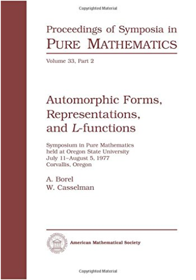
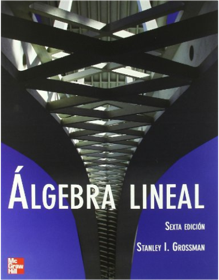
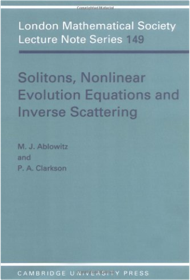
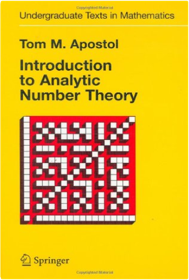
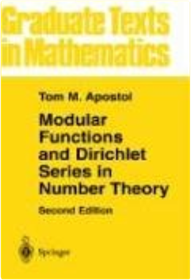
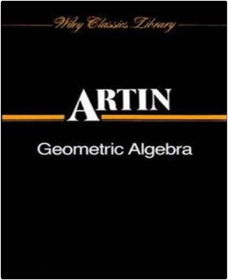

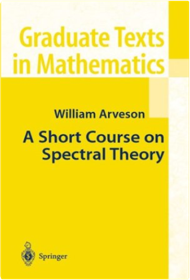

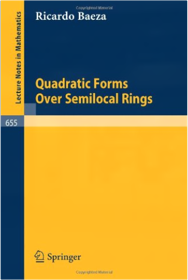
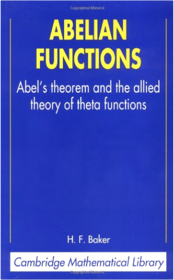
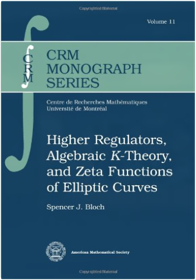
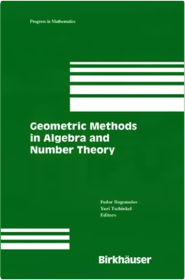
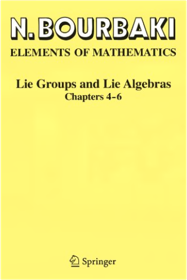
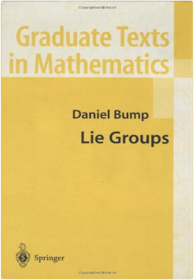
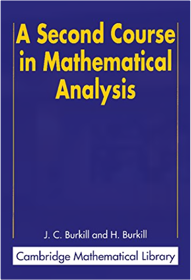
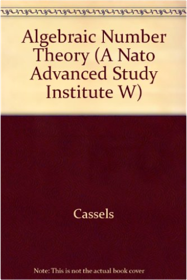
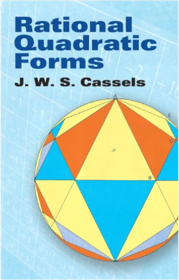
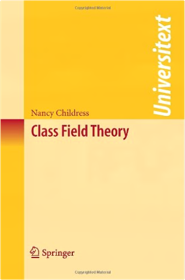
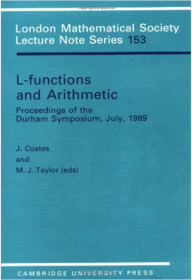

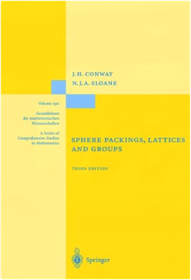
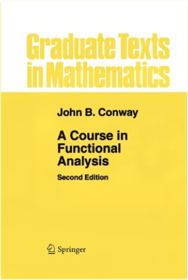
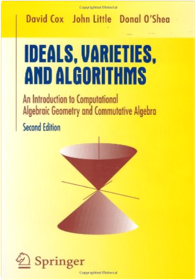
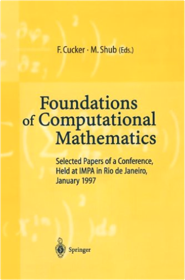

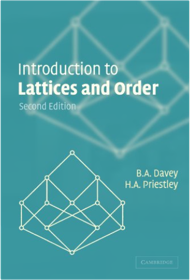

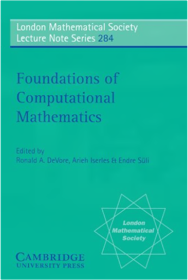
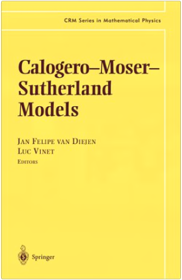
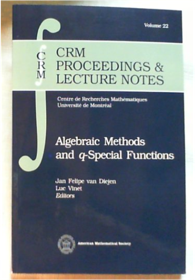
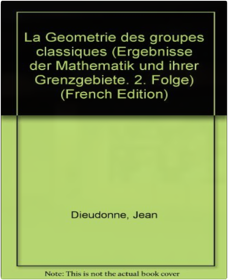
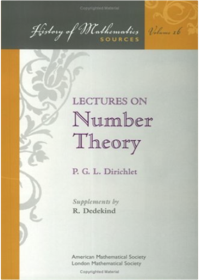
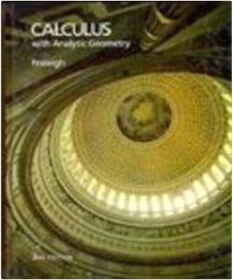
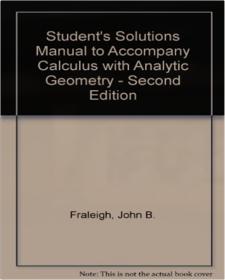
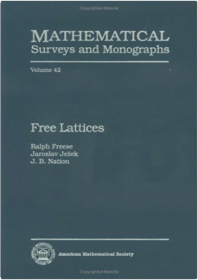



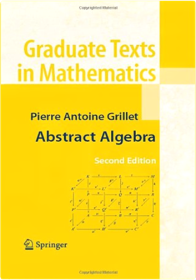
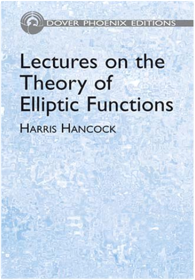
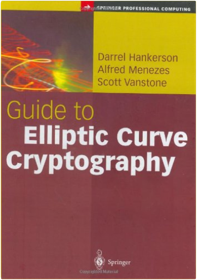



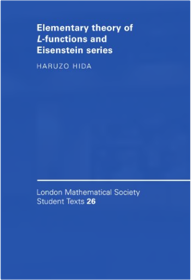

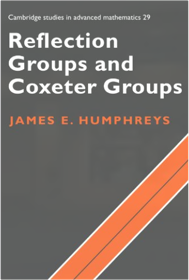

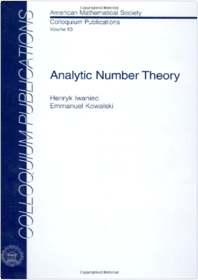

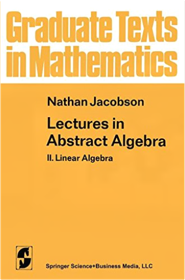
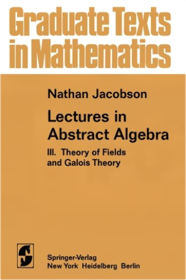
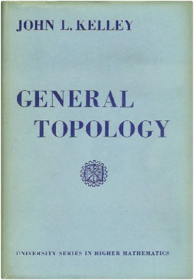

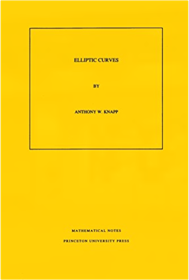
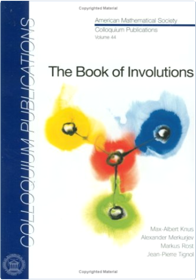

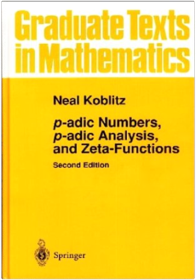
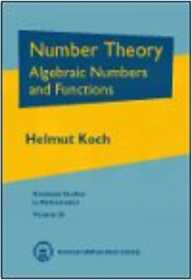

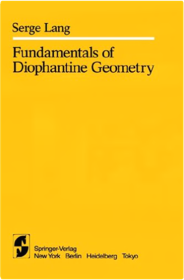
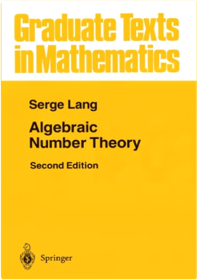
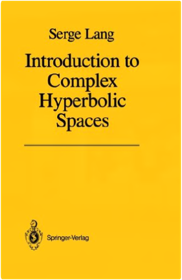
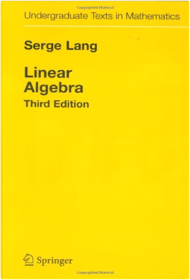
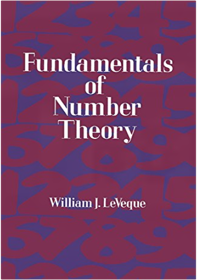
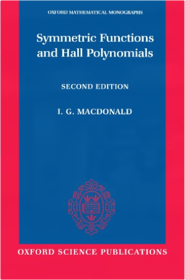
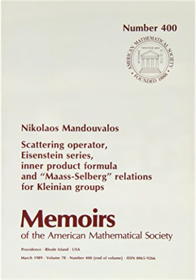


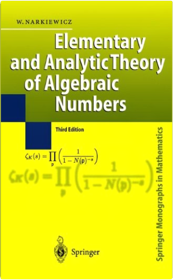

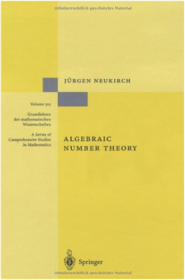
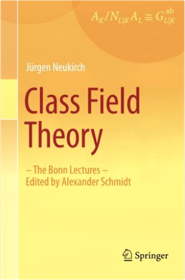
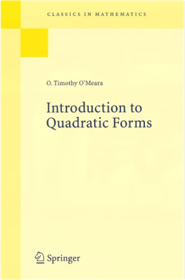
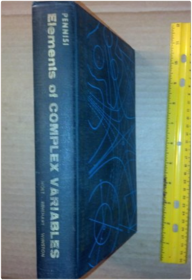
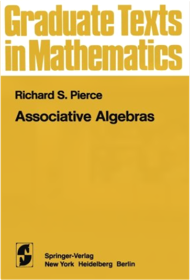
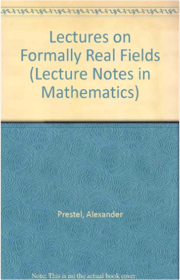
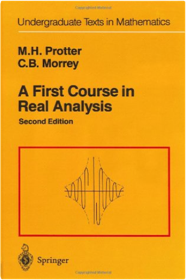
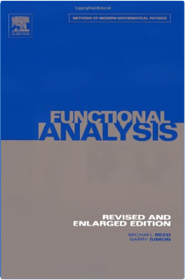
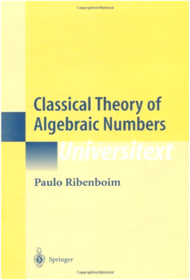
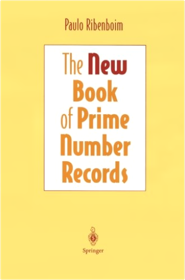

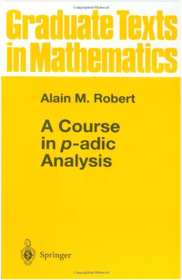

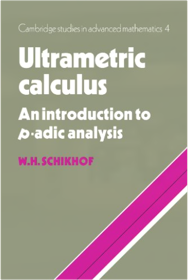
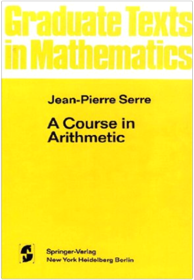
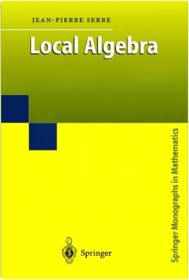
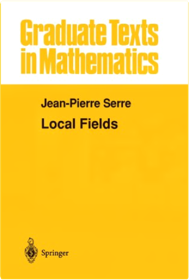
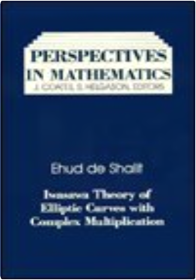
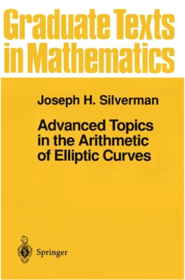
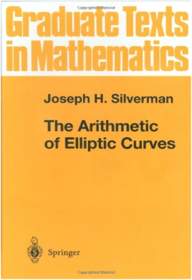
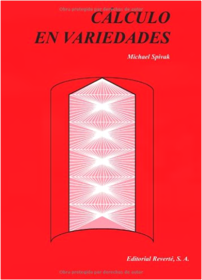
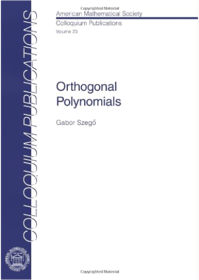
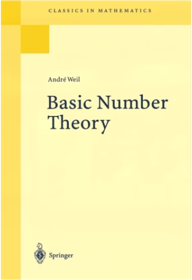
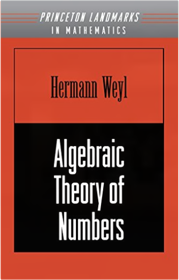


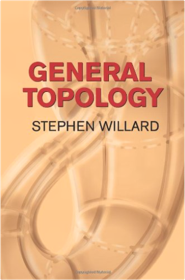


 Made with Delicious Library
Made with Delicious Library